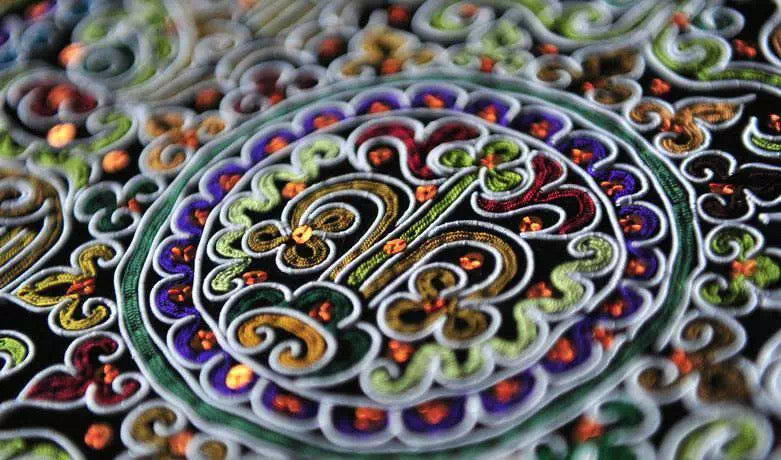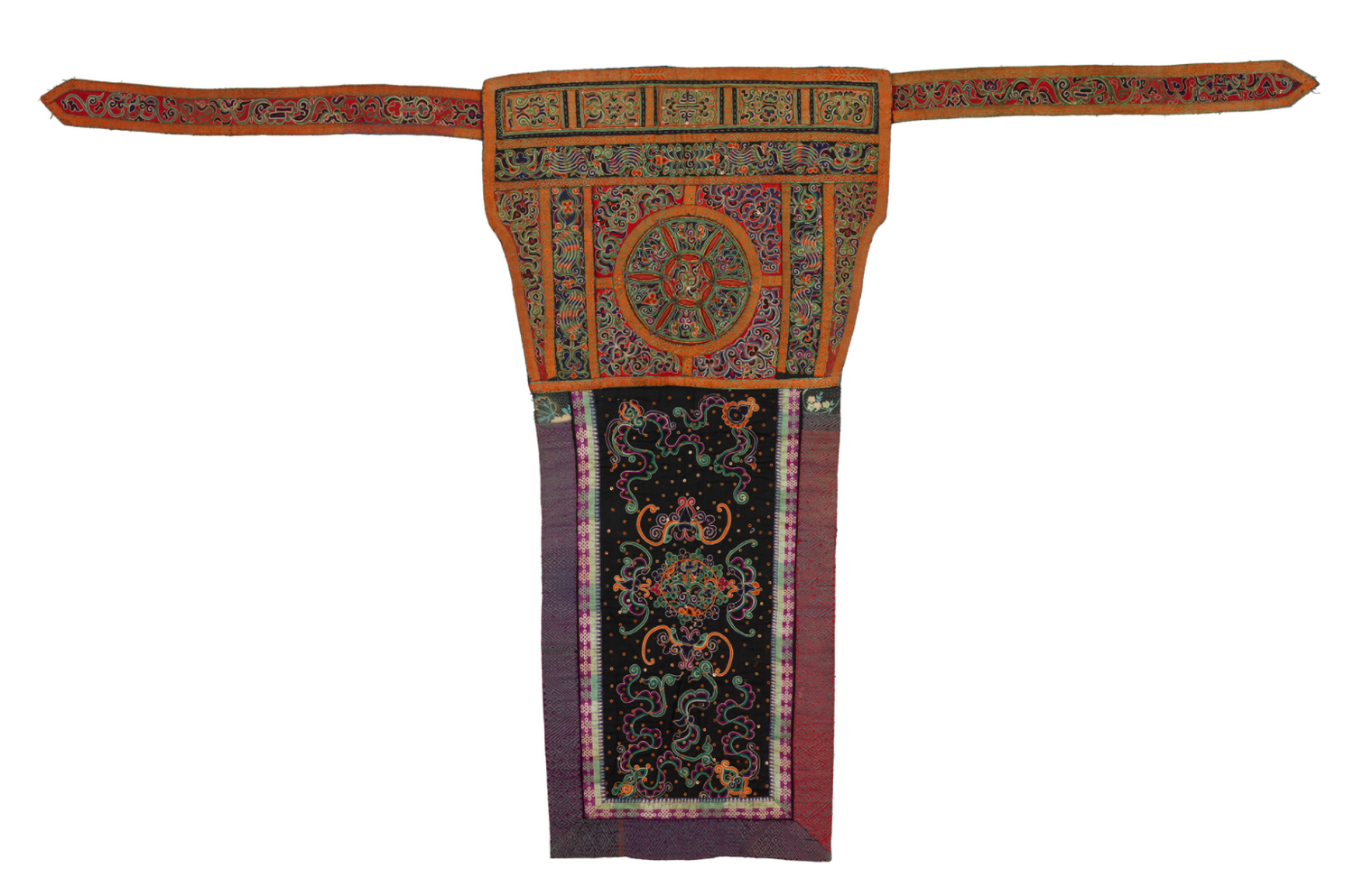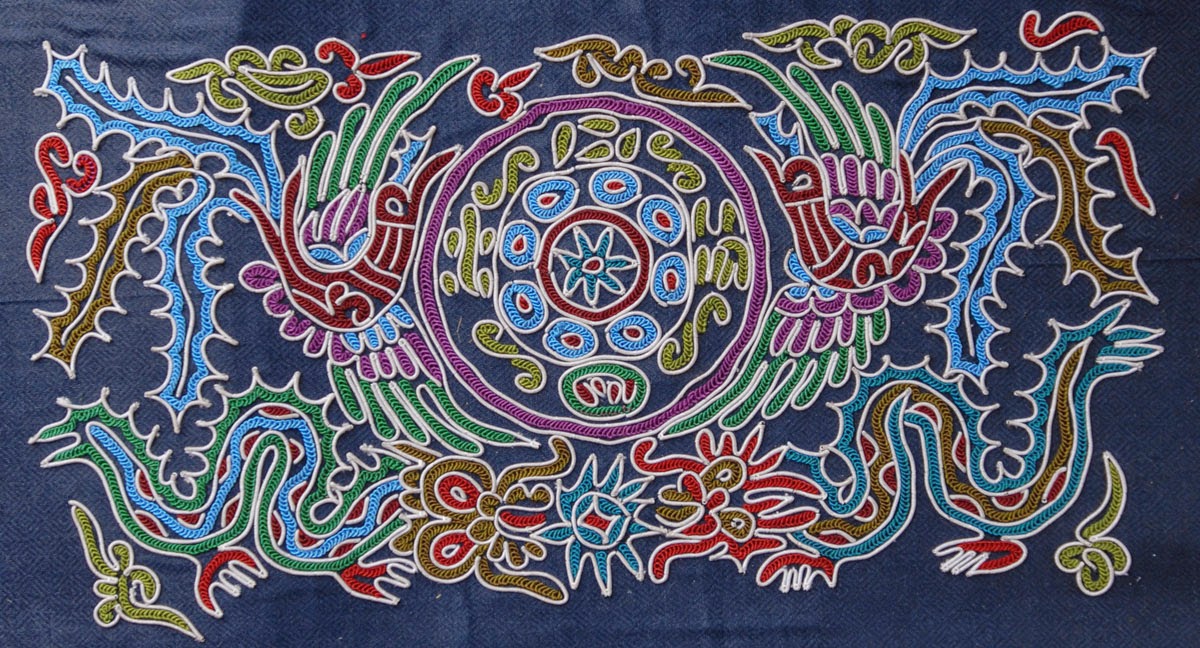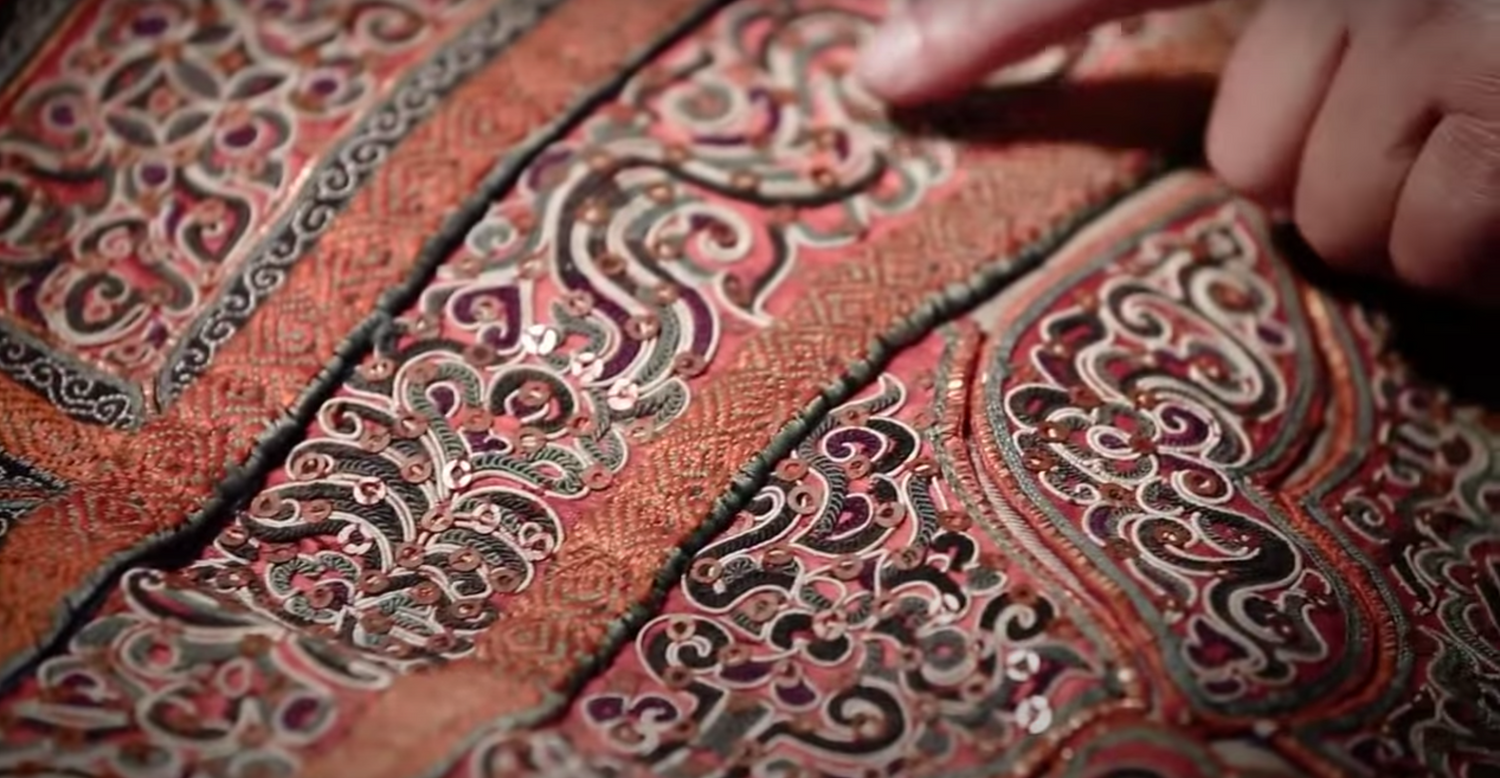Horsetail embroidery
Chinese embroidery history can be traced back to thousands of years ago. It reveals people’s life stories and a pursuit of beauty.
Horsetail embroidery a kind of distinctive craftsmanship that created by the Shui women in Guizhou province, southwest China, has a heritage of thousands of years. Its unique characteristic lies in embroidery using horsetail wound with silk thread.
Having a good reputation of living fossil of Chinese embroidery, the technique of horsetail embroidery of the Shui people was approved on the list of the first group of national intangible cultural heritage in 2006.

The origins of this handicraft are about Shui women who used the horsetail to memorize their husbands during the invading war. Moreover, the Shui people have long worshipped horses. Horses in Shui represent freedom, energy and strength.
Embroidery using horsetail also represent the beautiful hope of the Shui people.

The relatively strong horsetail hair can protect the patterns from becoming deformed, and, horsetail hair is non-perishable and durable. What's more, it has natural oils which are good for maintaining the luster of the surrounding silk threads.

The elaborated horsetail embroidery is specially prepared for their wedding. Women use the horsetail hair for embroidering baby carriers and passed down to generations after generations. Besides, it is also applied for all parts of their traditional costume such as blouse, trousers, apron, headdress, shoes even insole.

